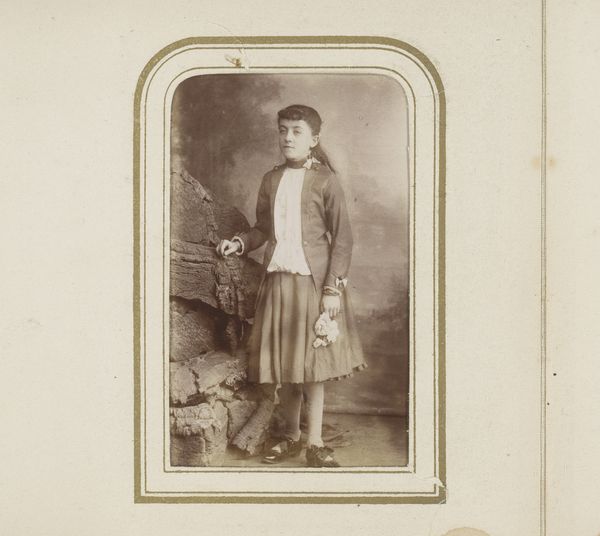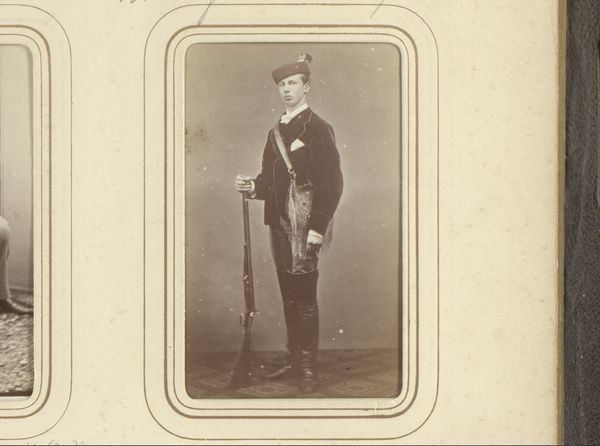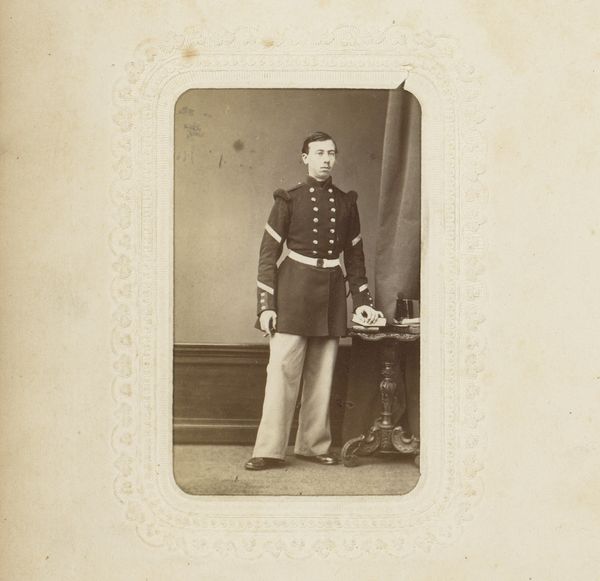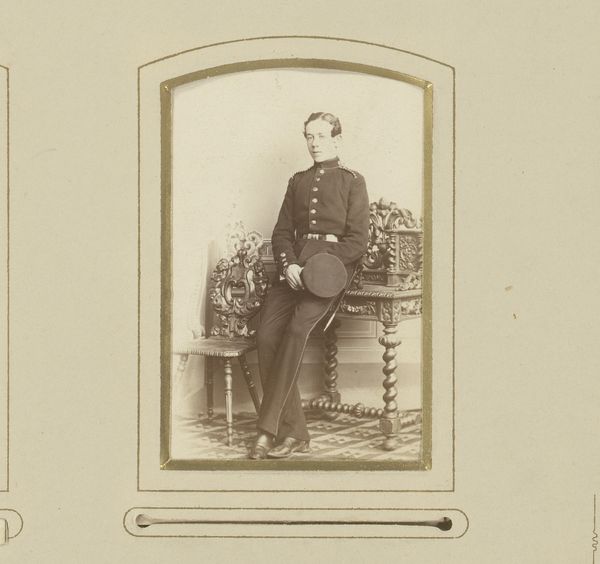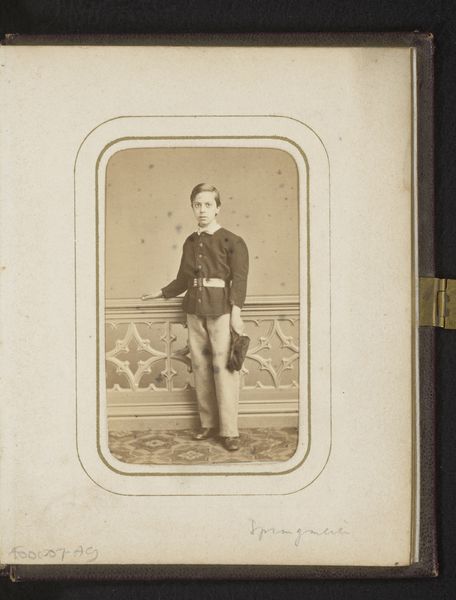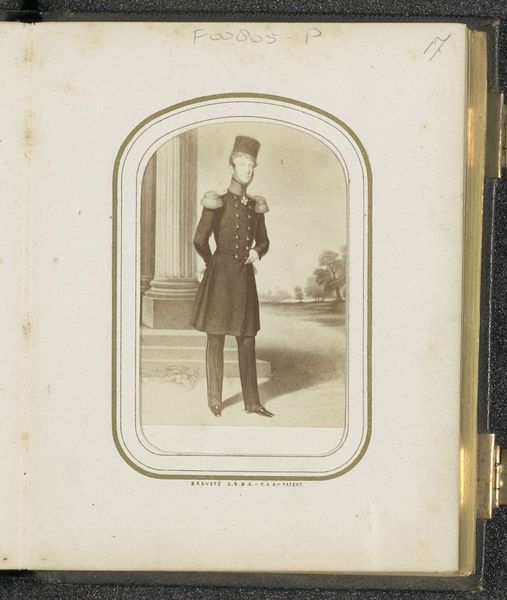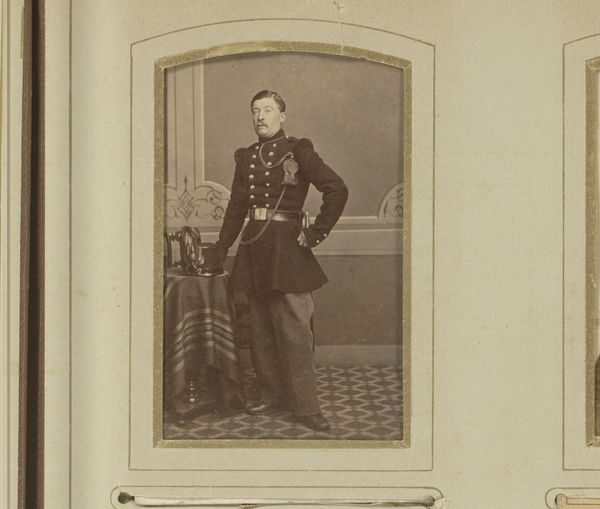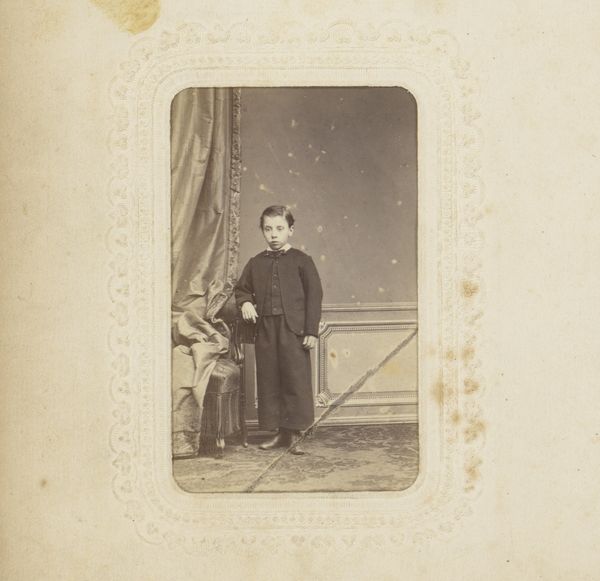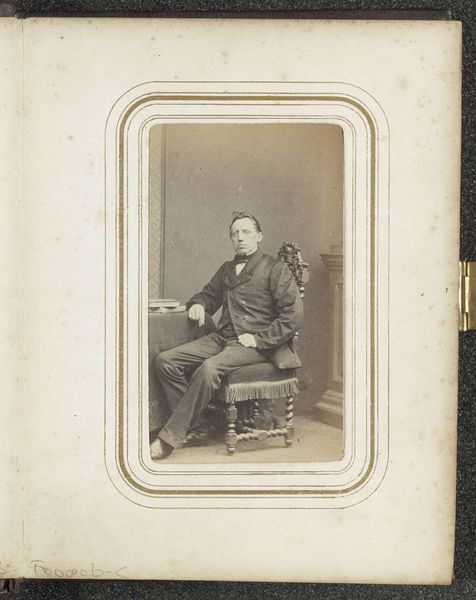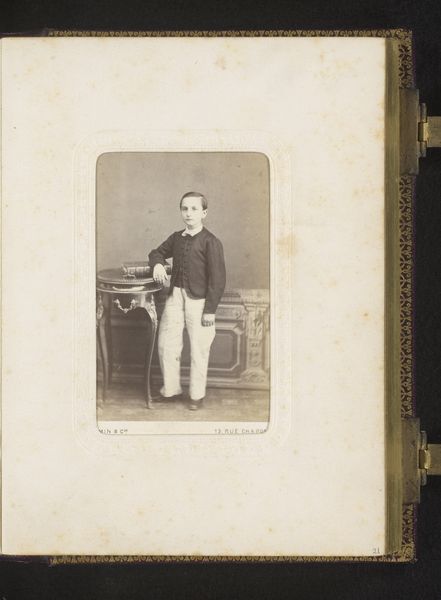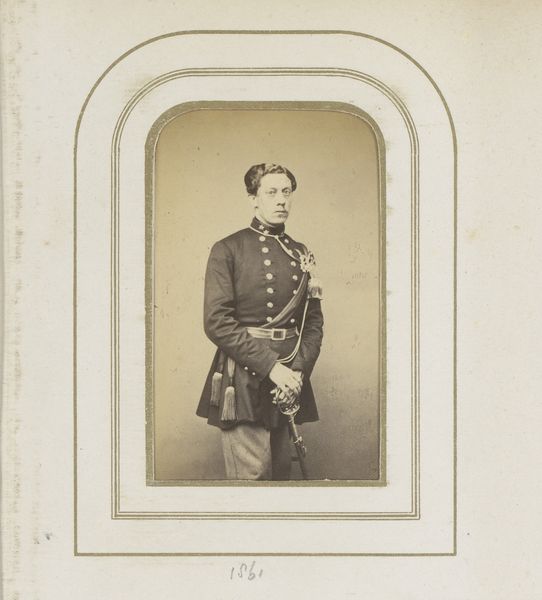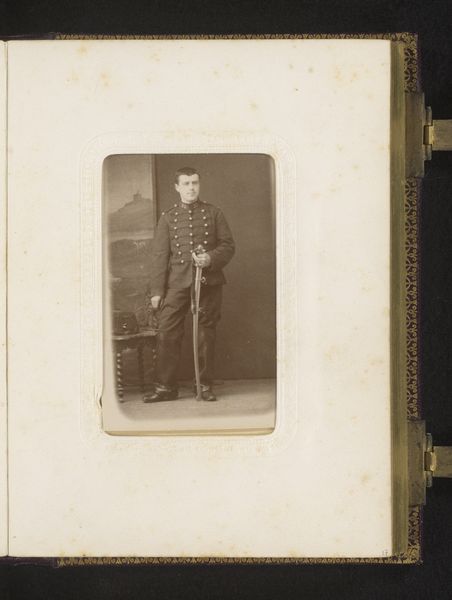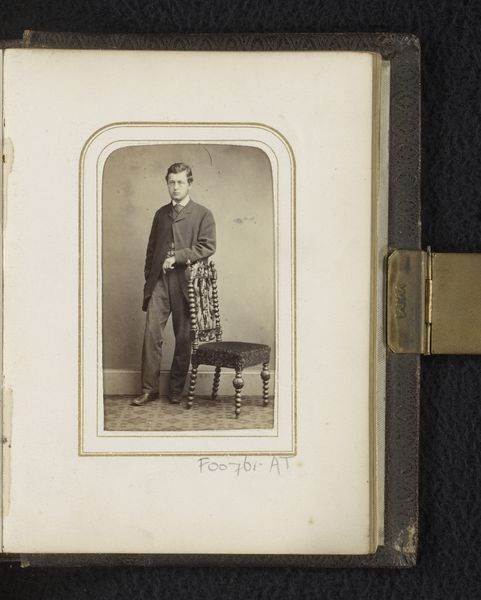
Dimensions: height 83 mm, width 51 mm
Copyright: Rijks Museum: Open Domain
Curator: Standing before us, we have a compelling piece: "Portret van een jongeman in uniform met boek," or "Portrait of a young man in uniform with book" by Charles d'Herou, dated between 1870 and 1880. It's an albumen print, which was quite popular during that time. What's your immediate reaction? Editor: The subdued tonality strikes me. The careful composition almost makes it look like a miniature stage setting; even the materials suggest a rigid social structure. Look how starched his uniform must be and how orderly the setting. It’s clearly about presenting a very particular image of youth and duty. Curator: Absolutely. Consider the historical backdrop; France was transitioning after the Franco-Prussian War, reshaping its identity. The uniform becomes symbolic, representing not just military service but also a nationalistic pride and aspiration. It also evokes an era when military careers offered avenues for social mobility for some men. Editor: It's fascinating how photography in that era often tried to mimic painting. This albumen print shows a striving for almost sculptural precision in terms of lighting and form, a real labor in creating what we see. But looking closer, you can also see the young man’s ambivalence in the posture, leaning slightly away. Perhaps that is where the personal meets the state ideal, however subdued. Curator: I see it too, it also reminds me of depictions of educated gentry but from the perspective of military discipline. It hints at the tensions between intellect and duty. The book beside him – could it be a manual or a novel? – becomes a potent symbol. It embodies a hope and possibility perhaps in contradiction to the uniform. It poses the broader question, who has access to knowledge in service of whom? Editor: Those details make it really compelling. This particular production – the physical albumen print – speaks volumes, from the collodion process, to the social use as portrait cards: It's a tangible object, reflecting a moment of enormous technological and cultural change regarding image and the role of class during and following the revolution. Curator: Precisely! It's more than just a portrait, but a material relic connecting us to a complex interplay of identity, history, and power. Editor: I agree. Thinking through the making and social context of the artwork really provides a multi-layered experience!
Comments
No comments
Be the first to comment and join the conversation on the ultimate creative platform.
